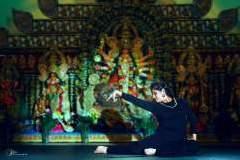Bharata is known only as being traditionally attributed authorship of the treatise Natya Shastra. All other early Sanskrit treatises were similarly attributed to mythical sages
He is thought to have lived between 200 BCE and 200 CE,but estimates vary between 500 BCE and 500 CE.
The foundation of Indian aesthetic theory can be traced to Bharata's Nāṭyaśāstra, in which he gave the theory of beauty. In ancient India the very essence of appreciating the art lay in the concept of the “sap” or juice of expression.
Natyashastra is the earliest literature on music and drama – written somewhere around 500 BC by Bharata Muni. Comprising 6000 couplets in Sanskrit and spread over thirty-six chapters, Natyashastra's focus was on dance and drama, with music as an aid. The title is a combination of two Sanskrit words – Natya and Shastra.
Navarasa means nine emotions; rasa means emotional state of mind. Nine emotions are Shringara (love/beauty), Hasya (laughter), Karuna(sorrow), Raudra (anger), Veera (heroism/courage), Bhayanaka (terror/fear), Bibhatsa (disgust), Adbutha (surprise/wonder), Shantha (peace or tranquility).
The Aura of a frightened person is black, and the aura of an angry person is red. The nine colors that signifies each emotions are Green (Shringara), White (Hasya), Grey (Karuna), Red (Roudra), Orange (Veera), Black (Bhayanaka), Blue (Bheebhatsya), Yellow (Adbutha) and White (Shantha).



-00001.png)


-00001.png)




